
Salads: buyer's guide
All our advice to help you choose between different lettuce seeds
Contents
When it comes to sowing salad leaves, choice is vast. Even Kafkaesque when faced with the staggering number of seed packets. Indeed, alongside the indispensable large family of lettuces, which includes heading lettuces, Batavia, romaine and cut-and-come-again lettuces, curly endives and escaroles won’t be outdone. Not forgetting peppery rocket, mild lamb’s lettuce and fresh cress, all deserving their place among salad leaves. All these salad leaves have different shapes, colours and flavours, not to mention differences in sowing and harvest periods, and their resistance to bolting… which are also key criteria when deciding which salad varieties to include in your vegetable garden.
By following all our tips and suggestions, you’ll have everything you need to choose your salad seeds based on criteria that match your preferences and needs.
Depending on their colour
In everyday language, people tend to use the term « green salad » as a generality. However, not all salads are green. Some have purplish tinges, others are a tender green or, conversely, very dark, others still display a lovely red colour.
A red that stands out
Among salads that do not fear blushing, one outshines the others: wild chicory (Cichorium intybus). This salad, which forms a tight head of leaves entirely red with white midribs, undeniably adds colour. Rouge de Vérone and Palla Rossa share vegetable beds but Rouge de Trévise also merits attention.
Just flecked with red
Other varieties will at once colour both your vegetable patch and plates with leaves showing red tinges. Thus, among cut-and-come-again lettuces, Lollo Rossa, Senorita and Red Salad Bowl offer crunchy leaves tinged with red almost all year round.
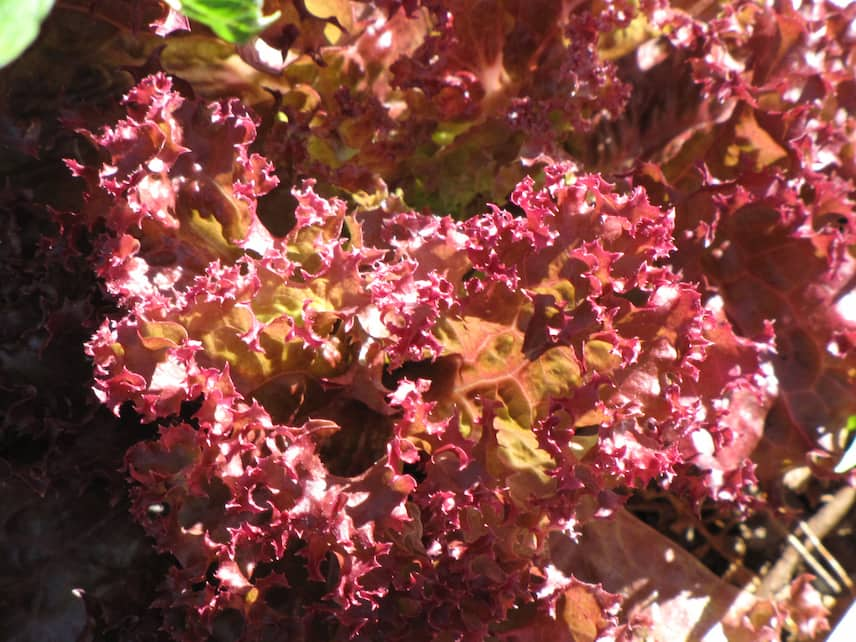
Lollo Rossa cut-and-come-again lettuce displays a lovely red colour
Some Batavia lettuces, such as aptly named Goutte de Sang and Rouge Grenobloise, butterhead lettuces Grasse Capuccio and Merveille des 4 saisons, and romaine lettuces Oreilles du Diable display red unabashedly.
50 shades of green
From the very tender green of butterhead ‘sucrine’ lettuces to the almost brown-green of some winter lettuces, green dominates among salads. Let’s not overlook lamb’s lettuce with its true green, rocket with its powerful flavour or watercress with its similarly piquant taste.
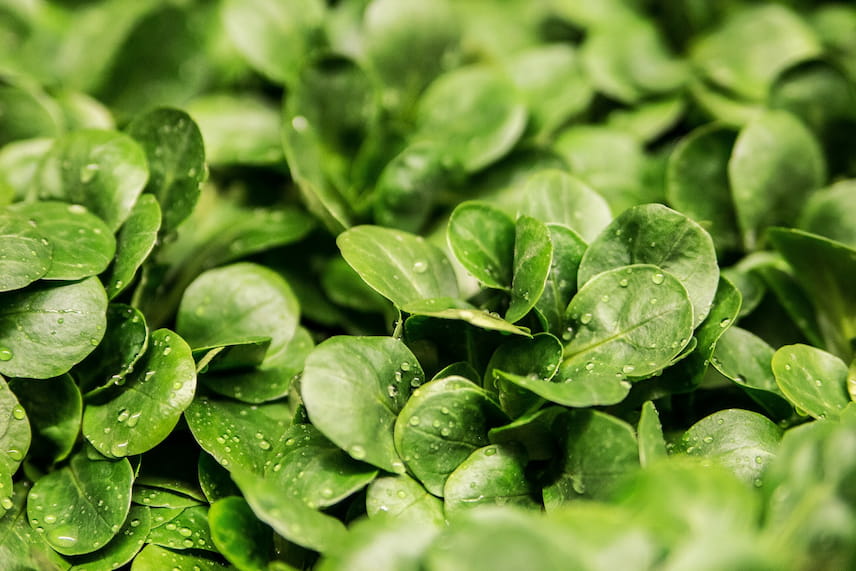
Lamb’s lettuce displays a deep green
Those that display their paleness
Escaroles with very crunchy leaves show their difference with a heart that ranges between yellow and white. Chicory Scarole Blonde à cœur or Grosse bouclée reveal all their charms to the gardener while Nuance is more discreet. For frisée chicories, it’s also fun to play with the contrast between green and white leaves.
Read also
How to succeed in sowing salads?According to their pruning
Depending on vegetable garden size, grow lettuce varieties according to their size and space they occupy.
Small formats
For miniature vegetable gardens, prefer cut-and-come-again lettuces such as Oak leaf, the Salad bowl available in green or red, Lollo Rossa or Lollo Bionda… which have the advantage of leaves that regrow after each harvest. They are therefore productive while taking little space. Rocket is also ideal for small spaces.
XXL-sized lettuces
If you want large, hefty lettuces, opt for sowing head lettuces. Butterhead lettuce Du Bon Jardinier, Fat Lazy Blonde and Apia produce large, voluminous heads. Batavia de Pierre-Bénite can also be sown for its firm, heavy heads.
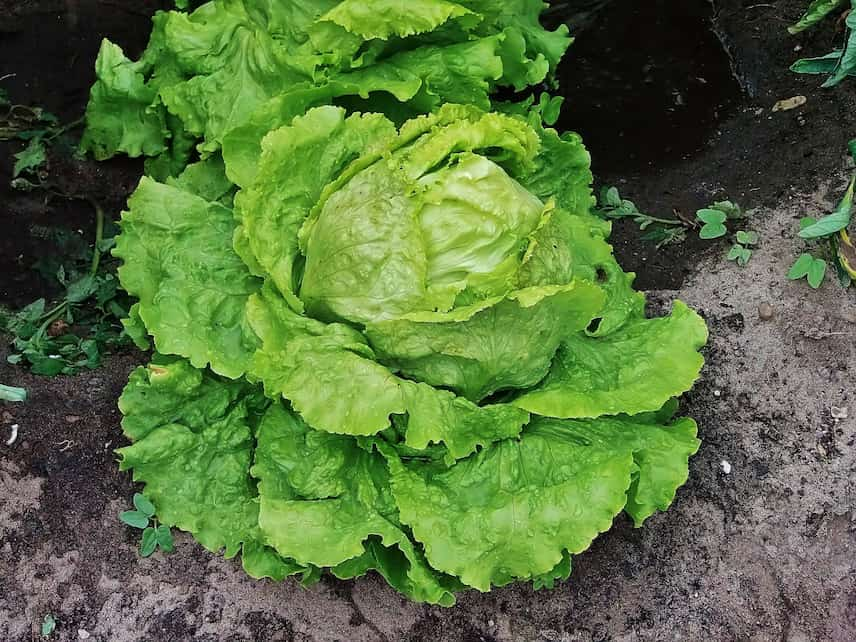
Batavia de Pierre-Bénite offers voluminous heads
Discover other Salad leaves
View all →Available in 1 sizes
Available in 1 sizes
Available in 1 sizes
Available in 1 sizes
Available in 1 sizes
Available in 1 sizes
Available in 1 sizes
Available in 1 sizes
Available in 1 sizes
Available in 1 sizes
Depending on their flavour and texture
In salad, everything comes down to taste! Some have a pronounced bitterness, others a more neutral flavour, others are outright piquant or even peppery. Texture also varies, from crunchy leaves to those that offer little resistance to the bite.
Those that crunch
If you particularly enjoy crunchy-leaf salads, choose escarole chicories, which exist in a multitude of varieties: Blonde à Cœur Plein, Grosse Bouclée, Géante Maraîchère, Cornet d’Anjou… will delight your papillae. Curly chicories are also known for their crunch, with much finer leaves than escaroles. Fine de Meaux, Fine de Louviers or Grosse Pommant Seule all have excellent flavours.
Those with bitterness
Beyond the crunch of their leaves, escaroles and curly chicories stand out for a certain bitterness. Among somewhat bitter salads are chicories such as Rouge de Vérone, Rouge de Trévise or Palla Rossa. Pain de Sucre chicory offers only a hint of bitterness. As for wild chicory Monk’s-beard, it is also known as the authentic bitter chicory.
Those with a peppery flavour
When it comes to peppery flavour, two salads take centre stage: on one side, rocket, on the other, cress.
In the garden, sow wild rocket or cultivated rocket. Wild rocket’s leaves, finer, have a stronger flavour than cultivated rocket. As for cress, it deserves a place in the vegetable patch. Choose garden cress, watercress or perennial garden cress.
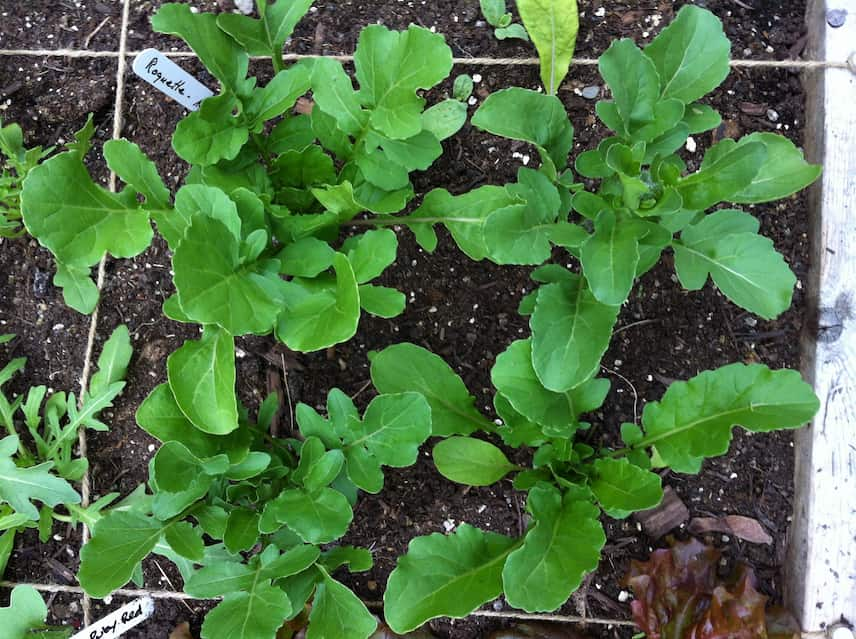
Rocket, wild or cultivated, benefits from a piquant, slightly peppery flavour
Read also
Succeeding in growing saladsDepending on sowing and harvest period
With so many varieties, lettuce can be harvested (almost) all year round. However, sowing must be timed correctly.
Spring sowing
Depending on region, lettuce can be sown outdoors from March and under cold frames or tunnels from February. These sowings can be staggered until May. Without hesitation, you can plant lettuces such as Merveille des 4 saisons, Apia or Reine de mai, Oakleaf and its companions, the cut-and-come-again lettuces, rocket and watercress. Batavias can also be sown from February. Choose between Reine des glaces, Dorée de printemps, Blonde de Paris, Rouge Grenobloise…
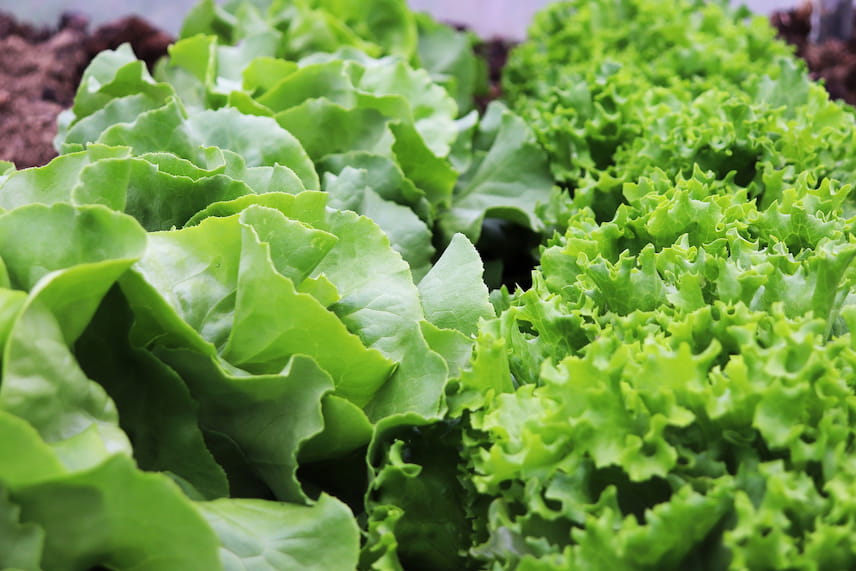
Spring is the ideal season to sow different varieties of lettuce
Late spring to early summer sowing
To sow lettuce at this time of year, choose varieties that resist heat and running to seed. Lettuce generally tends to dislike drought, yet some varieties prove slightly more resistant. In the family of lettuces, favour Grosse blonde paresseuse, Laitue du Bon Jardinier, Sucrine, Gotte jaune d’or, Merveille des 4 saisons.
Some batavias are also less prone to running to seed, such as Rouge Grenobloise, batavia de Pierre-Bénite, Canasta, Reine des glaces or Blonde de Paris. For romaine types, opt for Craquerelle du midi, Verte grasse or Chicon des Charentes. A few frisée types, like Grosse Pommant Seule and Pavia, can be harvested in summer. Rocket can also be harvested in summer provided it is watered abundantly.
From July to September, remember to sow lamb’s lettuce.
Autumn sowing
From September to October–November, depending on region, it is still possible to sow lettuces that are cold-hardy and grown under cold frames. Among lettuces, favour Gloire du Dauphiné, Rouge Grenobloise, Merveille des 4 saisons (which certainly lives up to its name!), Grosse Blonde Paresseuse, Merveille d’hiver, Rougette de Montpellier, Brune d’hiver, Oakleaf.
Depending on their blanching ability
Blanching consists of depriving lettuce of light so it loses bitterness and becomes more tender. Lettuce varieties that can be blanched are therefore primarily frisée and escarole chicories, which naturally have a more bitter flavour. Except for some that already have a tightly packed yellow or white heart, such as Blonde escarole ‘À cœur Plein’ or the Summer frisée with yellow heart, for which blanching is unnecessary.
Different techniques can be used to blanch lettuce. It is carried out 8 to 10 days before harvest and is done in dry weather.
According to their resistance to running to seed
For a salad, running to seed (or flowering) means it is trying to reproduce. This running to seed often happens prematurely if it gets too hot. So to prevent this, water generously, mulch the soil or shade the sowing. But it is also essential to choose varieties less prone to running to seed.
Varieties such as Reine des glaces, Merveille des 4 saisons, Reine de juillet, Grosse Blonde Paresseuse, Sucrine, Pierre-Bénite, laitue pommée Justine, batavia Carmen or remarkable batavia Kinemontepas, and cut-and-come-again lettuce Lollo Rossa are also known for delayed running to seed.
- Subscribe!
- Contents










































Comments